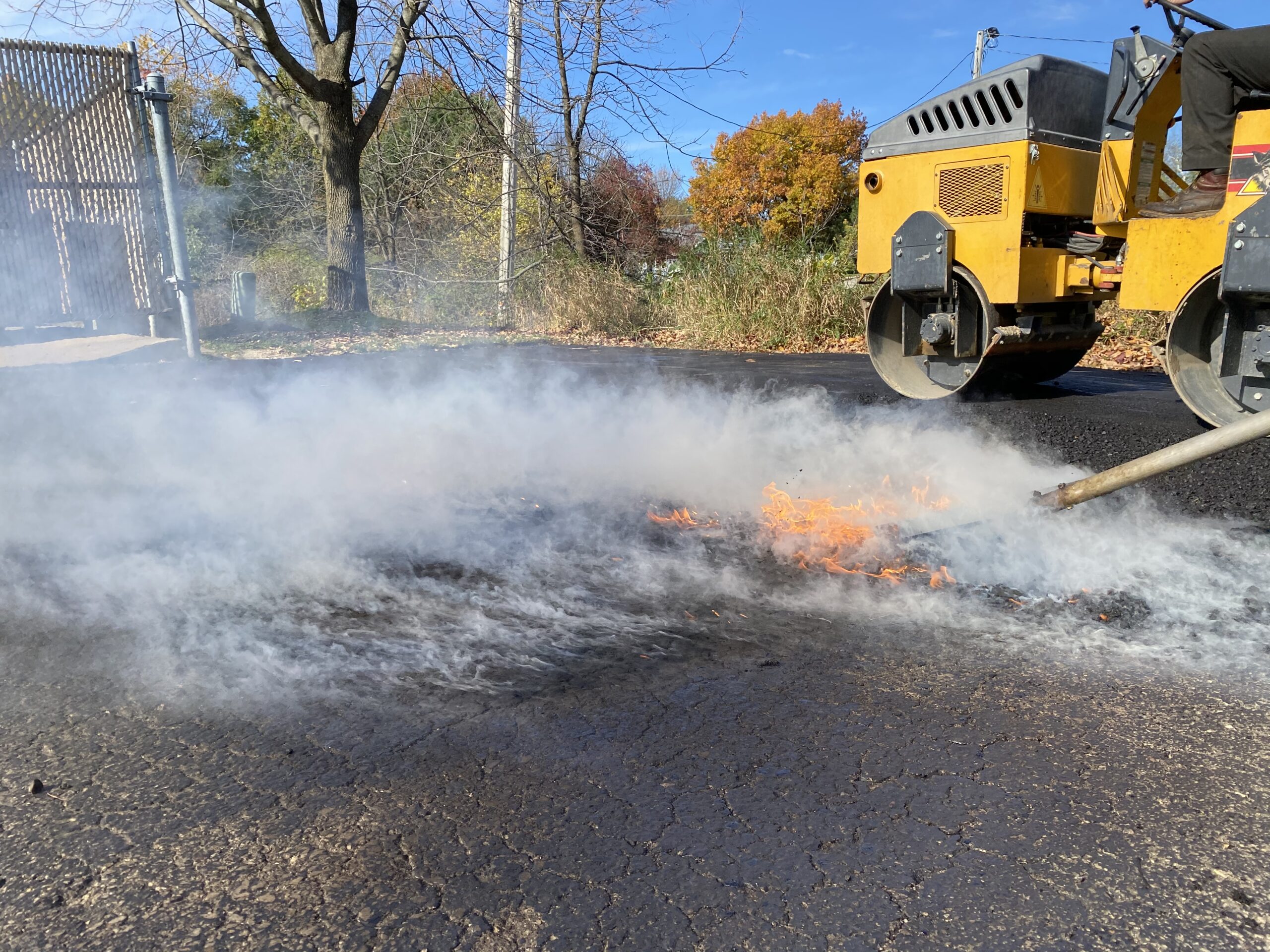
At Hallman Asphalt, we understand the importance of maintaining smooth, safe, and durable pavement surfaces. One effective technique for repairing asphalt damage is hot patching, but achieving optimal results requires the proper tools and techniques. In this guide, we’ll share our professional insights on using an asphalt roller for flawless hot patch repairs.
The Benefits of Hot Patching:
- Efficient Repairs: Minimize traffic disruptions and downtime with rapid repairs of cracks, potholes, and other surface defects.
- Cost-Effective Solutions: Restore pavement integrity without the expense of full-scale repaving, making it ideal for targeted repairs.
- Long-Lasting Results: Our expertise combined with hot patching techniques ensure durable repairs that withstand wear and tear, extending the lifespan of your pavement.
The Power of the Asphalt Roller:
The asphalt roller plays a crucial role in ensuring a successful hot patch repair by:
- Optimizing Adhesion: Our rollers apply precise pressure to compact the hot patch material, creating a strong bond with the existing pavement, preventing future movement and cracks.
- Achieving Seamless Integration: The roller ensures a smooth, level surface that seamlessly integrates with the surrounding pavement, minimizing tripping hazards and enhancing driving comfort.
Hallman Asphalt’s Preparation Steps:
- Thorough Cleaning: We meticulously remove debris like loose gravel or dirt from the repair area, ensuring a clean and optimal surface for adhesion.
- Precise Shaping: Our experienced technicians carefully cut the damaged area into a neat rectangle or square, providing a defined edge for the patch.
- Expert Patch Application: Using specialized equipment and our proven techniques, we apply the hot mix asphalt evenly and efficiently, filling the designated area completely.
Rolling with Expertise:
- Controlled Compaction: Our rollers operate at precise vibration frequencies to ensure optimal compaction without damaging the surrounding pavement.
- Methodical Passes: We make smooth, consistent back-and-forth passes over the patch, applying even pressure for uniform compaction.
- Eliminating Air Pockets: The roller’s compaction process meticulously eliminates air pockets, ensuring a uniform and durable hot patch repair.
The Hallman Asphalt Difference:
With our extensive experience and commitment to quality, Hallman Asphalt utilizes asphalt rollers effectively to achieve:
- Professional-Looking Results: Your repaired pavement will look seamless and aesthetically pleasing, reflecting the quality of our workmanship.
- Enhanced Durability: Our expert techniques and roller usage ensure long-lasting repairs that withstand heavy traffic and harsh weather conditions.
- Peace of Mind: Trust Hallman Asphalt for reliable, efficient, and expert hot patch repairs, ensuring the safety and longevity of your pavement.
